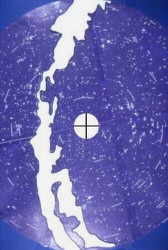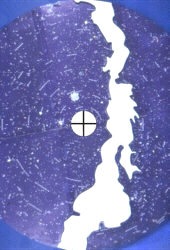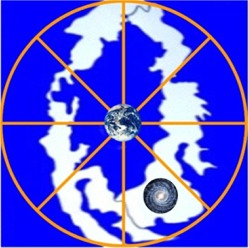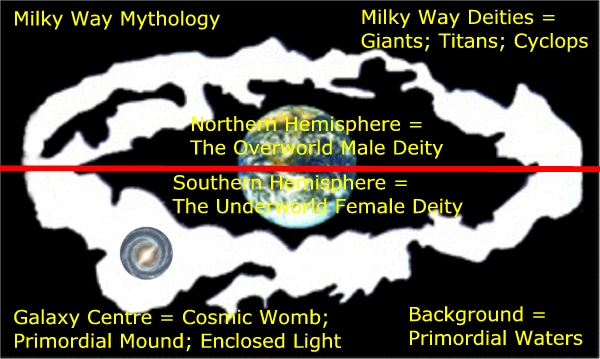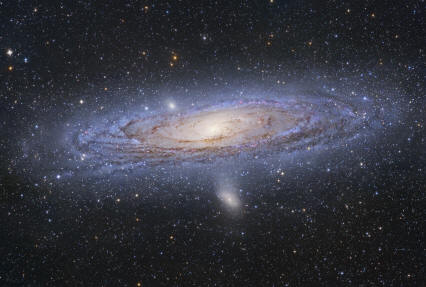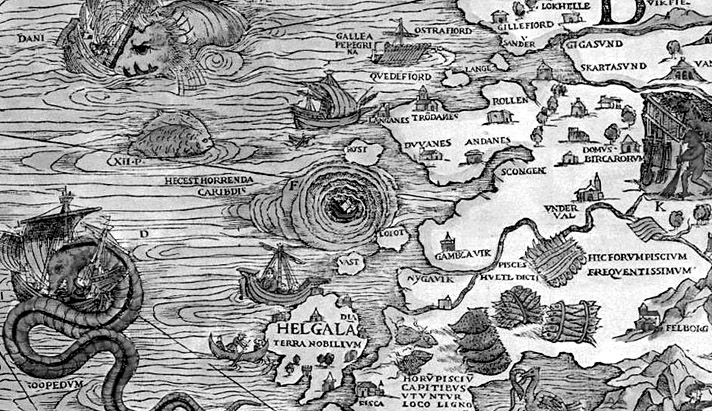Its essential premise is that much mythology and ancient literature has been badly misinterpreted and that they generally relate to a sort of monomyth conveying significant scientific and specifically astronomical ideas and knowledge.
Link to online Book here:
http://www.bibliotecapleyades.net/hamlets_mill/hamletmill.htm#top
Sir Francis Bacon
Quote from this site of Sir Francis Organization: http://www.sirbacon.org/mham.htm :
Santillana and Dechand in concentrating on the fact that the ancients knew about the precession of the equinoxes missed the relation of the macrocosm/microcosm doctrine to the plight of Hamlet.
They came close. They realized the story was associated with the legends of the "Golden Age", and with those great motifs of myth having to do with the "World Tree": The Ash Yggdrasil in the Edda; the world-darkening oak of the Kalevala; Pherecydes' world-oak draped with the starry mantle.
They even realized the story was associated with The Garden of Eden, and with the Tree of Life in The Garden of Eden. They neglected to emphasize the tree on which the golden apples grew in the Garden of Hesperides.
This tree included two additional features of the Garden of Eden story. It not only grew in a Garden, there was also a serpent connected with it. The "Eden" of the most ancient Egyptian mythology was a "circumpolar paradise." The Garden of Hesperides was also in the extreme north. Numerous writers on star lore identified the dragon which guarded the golden apples in the Garden of Hesperides as the constellation of Draconis.
Draconis was the pole constellation about the time the Garden of Eden story was supposed to have taken place, and would have been located in the topmost area of the branches of the world-tree. In ancient astronomical mythology Draconis was the old serpent, the evil one. Draconis is related to the stories of the Fallen Angels in the books of Genesis and Enoch. A number of authorities on astronomical mythology have claimed Draconis represented the tempter of Eve in the Garden of Eden. William Olcott said:
"The constellation Draco and Hercules are closely associated in ancient mythology, and Hercules is always represented as trampling the Dragon underfoot. These two constellations are in turn connected with Ophiuchus and Serpens, the figure of another giant overcoming a serpent, while he crushes the Scorpion under his feet. On the old maps the figures of these two famous giants appear head to head.
The Draco constellation as a center point for the Ecliptic Pole around which the Earth Axis pole wanderer 1 degree for every 71.6 year = 25.776 years cycle.
(My comment: If talking about the Earth axis and the serpent symbol, we must talk of 2-3 serpents: 1 in the north and one in the southern hemisphere, and maybe 1 representing the Earth equator. The northern relates to the Draco constellation as seen above here, but the southern relates to a much larger serpent, namely the curled up Serpent that symbolizes the Milky Way spiraling shape.)
These similar and striking groups, placed so
close together in the sky, show clearly that there was a
deliberate intention on the part of the inventors of the
constellations to emphasize the great fact of a struggle between
mankind and serpentkind. There seems here an evident reference to
God's interview with the serpent in the Garden of Eden. 'I will
put enmity between thee and the woman, and between thy seed and
her seed. It shall bruise thy head and thou shalt bruise his
heel."

Although in ancient times Draconis had a place
at the top of the World-tree he was cast down. With the precession of
the equinoxes Polaris moved up to take his place. More striking
still, as Santillana and Dechend point out, according to the ancient
mythologies, at the time Draconis was at the top of the pole-tree the
plane of the ecliptic lay in the same plane with that of the equator.
This meant days and nights were equal year round. There was an
"eternal" spring. Then, due to some great misfortune, the plane of
the ecliptic was dissevered from the plane of the equator. The axis
of the earth was tilted. The serpent was cast down. That ancient
pair, Orion and Virgo, passed down from their place on the plane of
the ecliptic below the equator to winter and death.
The important point Santillana and Dechend failed to note was the fact that the story also had to do with the ancient doctrine of the macrocosm and the microcosm which maintains that changes in the macrocosm are reflected in the microcosm. If they had taken a closer look at the Garden of Eden story they might have stumbled upon this fact that they overlooked.
Before looking at the story of the Garden of Eden it is well to take a closer look at Moses himself, since it was his story, and the context points back to the Egyptian priesthood.
We are assured by St. Paul that,"Moses was learned in all the wisdom of the Egyptians." Actually this goes without saying. As a member of the royal family of the pharoah (the adopted son of the daughter of the pharoah) Moses would have been required to be initiated into the Egyptian Mysteries. The wisdom of the Egyptians was maintained in the temples and withheld from all except the initiates.
The great center of Initiation in Egypt at the time of Moses, and indeed, up to the time of Christ, was reputed to be the Great Pyramid. It was a custom of Initiates in their written works to leave for other initiates, who might see their works, some sign denoting their school. A examination of Exodus reveals that Moses did, as a matter of fact, leave such a sign, and in a most clever manner also.
Moses built a tabernacle in the wilderness as a temple for his priesthood just as the Great Pyramid was the temple for the priesthood of the Egyptian Initiates. Moses gave curiously exact instructions for the curtains of the outside of this tabernacle:
"And thou shalt make curtains of goats' hair to be a tent covering the tabernacle: eleven curtains shalt thou make. The length of one curtain shall be thirty cubits, and the width four cubits: and the eleven curtains shall all be of one measure. And thou shalt couple five curtains by themselves, and six by themselves, and shalt lay the sixth curtain double over the front side of the tent."
All of this detail indicates secret intent. A close examination reveals the diagonal of the twice mentioned second curtain (30 cubits by 24 cubits) yields a very significant angle. This angle is the pitch of the side of the Great Pyramid! The side of the Great Pyramid has a pitch of 51 degrees, and 51 minutes, and the diagonal of any rectangle constructed in the proportion of 30 x 24 has the same pitch. (For more detail see, "The Secrets of Ancient Geometry" by Tons Brunes).
As an Initiate of the Great Pyramid School, the writings of Moses offer a great opportunity for learning more about their doctrine. He did not take the trouble to leave the trademark, without also leaving the doctrine. A portion of this doctrine is in The Garden of Eden story.
A major aspect of the Garden of Eden story had to do with the serpent. This was (My comment: Was NOT, see below) Draconis. The Great Pyramid was oriented to Draconis. We know that, due to the precession of the equinoxes, various stars or constellation take their place during the vast 25,800 year cycle as the pole star. Draconis is one of these, but Draconis has a special place because it is actually at the pole of the polar ecliptic. In order words when Draconis was the Pole Star, the ecliptic would have coincided with the equator.
Days and nights would have been equal year round, and there would have been spring year round, a golden age. Everyone knows the story of The Garden of Eden. God created a garden. In the midst of the garden He put the tree of life, and the tree of the knowledge of good and evil.
My comment: The concept of "good and evil" is confused for the concept of "opposite". We have 1 serpent on the northern Earth hemisphere in the star constellation of Draco and we have 1 serpent on the OPPOSITE southern Earth hemisphere, which together tells of the cosmological knowledge of everything in our Galaxy, our Earth; the Sun; the Moon and Planets; the location of our Solar System in the galaxy - and which 4 elements that created it all from the very beginning - and even before) http://www.native-science.net/Forefather.Worship.htm
In the Garden He also put Adam and Eve, the first man, and the first woman. They were not supposed to eat of the fruit of these two trees, but the serpent enticed Eve into eating of them, and Eve enticed Adam. As a result God cast the serpent down. He will go on his belly and eat dust all the days of his life. And God cast Adam and Eve out of the Garden of Eden.
(My comment: When talking of The Garden of Eden and a serpent, we are dealing with the Story of Creation in the center of our Galaxy. "And God cast Adam and Eve out of the Garden of Eden" means that everything in our Milky Way Galaxy once was born DIRECTLY OUT FROM THE GALACTIC CENTER IN THE STAR CONSTELLATION OF SAGITTARIUS - quite the opposite of what modern cosmologists and astrophysicist tell us). Link: http://www.steady-state-universe.net/ Galaxy Creation)
Hamlet (legend)
http://en.wikipedia.org/wiki/Hamlet_(legend
